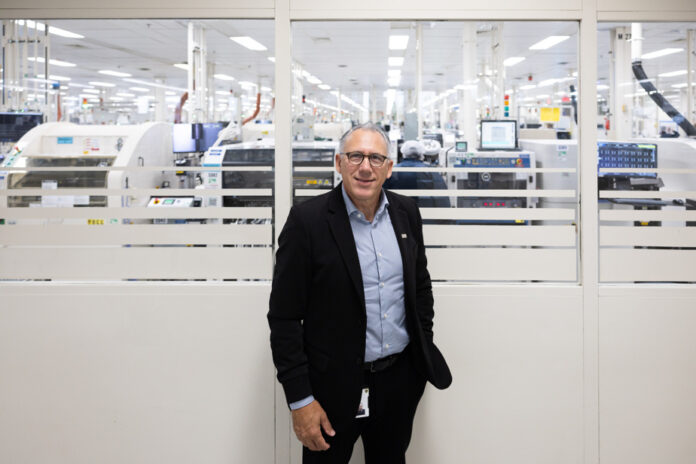Already the largest semiconductor assembly plant for the open market in North America, the IBM plant in Bromont is not likely to run out of work in the coming years. The energetic policy of repatriating semiconductor production which was put in place last year with the adoption of the CHIPS Act in the United States will stimulate the factory’s activity, anticipates its chief director, Stéphane Tremblay.
The Bromont plant, which celebrated its 50th anniversary last year, recently made headlines with the inauguration of the quantum supercomputer, Quantum System One, which sits in the entrance hall of the microelectronics manufacturing company.
The factory, which initially assembled IBM Selectrics typewriters, transformed over the years to mechanically assemble ceramic semiconductors for all the needs of the multinational IT company, before add assembly of microprocessors and encryption subsystems.
“Today, we are the only IBM factory in the world that assembles the components of all of IBM’s P and Z systems, which are large computer systems used by large financial or insurance, because of their unique computing capabilities,” explains Stéphane Tremblay, chief director of the IBM Bromont plant.
Stéphane Tremblay began his career at IBM in Bromont in 1991, as an engineer in the quality control department. During his 30 years with the company, he held 18 different positions, becoming its top manager in February 2021.
About ten years ago, the Bromont plant had to transform again when it gradually stopped assembling semiconductors for the three major video game console manufacturers, due to the evolution of technologies.
“At the same time, IBM sold its semiconductor foundries that it had in New York State. We had to work with a new supplier, GlobalFoundries. Now, we also do business with TSMC from Taiwan and Samsung from Korea,” explains Stéphane Tremblay.
Essentially, the Bromont plant receives the semiconductor wafers from its suppliers and maps the path for the electrons to flow, while applying thermal solutions to protect the components from the heat induced by this activity.
The Bromont plant is the only one in North America to assemble semiconductors for external customers, for the open market.
“There are other semiconductor factories, but they only assemble their own products. With our capacity, we assemble IBM semiconductors, but we do it for other clients according to their specifications.
“We work in particular with major 5G equipment manufacturers and data centers, but we also want to serve automobile manufacturers, while cars are increasingly becoming data centers on wheels,” emphasizes Stéphane Tremblay.
The Bromont factory’s major clients now represent between 50 and 60% of the assembly center’s volume of activity, while IBM accounts for 40 to 50% of annual production.
This percentage will be expected to change over the coming years thanks to external customers, while the United States invests massively in the repatriation of its semiconductor production capacity.
In 2022, President Joe Biden passed the CHIPS Act, which made $52 billion available to chipmakers to build foundries in the United States. Federal funds will be used to finance 20 to 30 percent of the cost of implementation projects. We are therefore planning more than 150 billion in new factory projects.
“These will essentially be foundries that will meet the needs of the North American market, to stop dependence on Asian semiconductors. It is a continually expanding market. We will be able to do the final assembly of the semiconductors in our factory, where we still have capacities that we can deploy,” specifies the chief director.
IBM Bromont already had more than 2,000 employees, at the height of semiconductor production for video game console manufacturers. Today, the company has more than 1,000 workers, including several hundred engineers.
It was forced to rethink itself when it was forced to take on the prospecting of new customers alone after IBM sold its American foundries.
“I joined the business and new product development group in 2016, when we began operating independently. We created a sales team, processes, customer management and we regained the volumes that we had lost when console manufacturers stopped doing business with us,” explains the manager.
Stéphane Tremblay also emphasizes that this is the great strength of the company, its ability to take on challenges.
“We are a factory that manufactures with pride and we are well positioned to benefit from the construction of the new foundries that will need us. In addition, we are at the heart of the Bromont innovation zone, which constitutes a good nucleus for the microelectronics industry,” anticipates the chief director of IBM Bromont.















